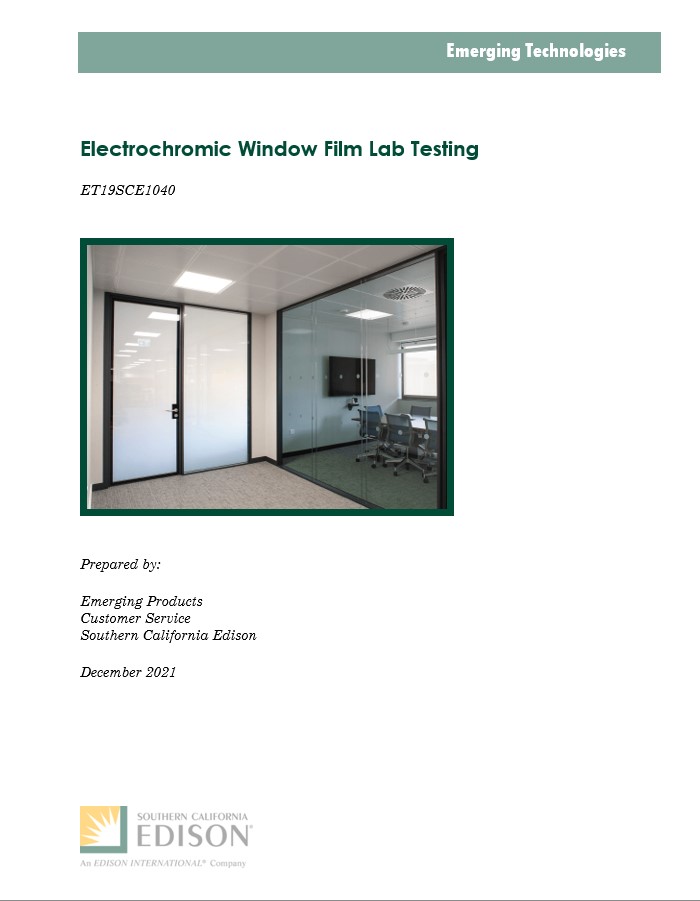Project Info
COMPLETE
 Project Title
Project Title
 Project Title
Project Title
Electrochromic Window Film
Project Number ET19SCE1040 Organization SCE End-use Lighting Sector Commercial Project Year(s) 2019 - 2022Description
To test the performance of Electrochromic/Smart Tint Windows, A test apparatus box will be made to simulate a space. Using a spectrometer and simulated light (Halogen light) to capture the wavelengths. This will help determine whether or not the window film will block out any infrared radiation. Other datapoints such as luminosity and temperature will be gathered. This project is to work closely with LADWP in order to build the test apparatus and procure test samples of window films. The main goal of this project is to determine if window films are effective at blocking the sun while maintaining acceptable light levels in the room while also keeping the room cool in order to save energy on HVAC.
Project Report Document
Loading PDF Preview...
